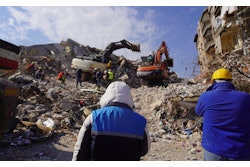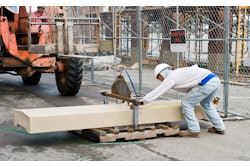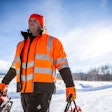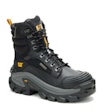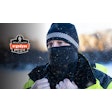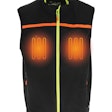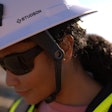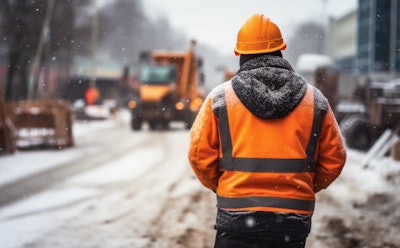
In choosing between waterproof hoodies or long-sleeve shirts on a construction site, the choice depends on the specific conditions and job requirements as well as weather considerations.
Bear in mind that ‘waterproof’ and ‘water resistant’ offers different levels of protection. Waterproof apparel is designed to keep water out entirely. Water-resistant apparel repels water to a certain degree, but may not be entirely waterproof.
Some workers choose to have both waterproof hoodies and long-sleeve shirts available to be prepared for changing weather conditions.
Weather Conditions
Those doing work in inclement weather will want to consider that whatever the choice – a hoodie or long-sleeve shirt – such conditions may necessitate high visibility, especially working in areas such as near roadways. Choose apparel that meets the ANSI/ISEA 107 standard for high visibility safety apparel as well as the ANSI Class 3, Type R visibility standard.
The material from which the apparel is made will make a difference in its ability to repel water. Consider waterproof or water-resistant fabrics such as nylon, polyester, or special coatings like Gore-Tex.
A sealed seam enhances the ability of the apparel to maintain waterproof integrity. Waterproof zippers help to keep the elements from entering through the garment. In generally wet and rainy conditions, a waterproof hoodie may provide more comfort and protection from the elements.
Waterproof hoodies are designed to repel water, helping to keep a worker dryer for longer periods of time in inclement weather. If they are to be worn instead of other rain gear options, a waterproof hoodie can be less restrictive in terms of body movement.
Many hoodies are designed as such that they can be adjustable and provide protection for the head and neck from cold, wind and rain. They also may be able to be worn over a hard hat for extra protection. Given that hoodies are typically made of comfortable materials, they may provide warmth and protection against the elements while also remaining breathable.
A breathable long-sleeve shirt may be preferred in conditions that are warm and sunny or during autumn when it is not quite cold enough to necessitate a sweatshirt. In summer or in warm climates, options are available that provide UV protection. Long sleeve shirts can be worn as a base layer to which additional clothing layers can be added as needed. They are often designed to be durable and rugged, providing protection against wear and tear. Adjustable cuffs and hems can help seal out water.
Job and Safety Factors
Those workers who wear hard hats on the job must consider several factors when choosing to wear a waterproof hoodie instead of a waterproof long-sleeved shirt.
If it is safe to do so, proper fit and adjustment of both the hoodie and hard hat are significant factors. The straps and suspension system of the hard hat should be adjusted to accommodate the extra layers of the hoodie and still provide a snug and secure fit to mitigate the possibility of it getting caught or interfering with its function.
Also, the hoodie should not obstruct peripheral vision, nor should it restrict head movement or create possible hazards. Wearing a hoodie may impair the ability to clearly hear sounds.
When it comes to waterproofing and breathability, it’s important to know that manufacturers typically describe the waterproof and breathability ratings of fabrics using two numbers, often separated by a backslash. The first number is waterproof, the second is breathability (with higher numbers indicating higher breathability).
Testing for Waterproof Hoodie
Waterproofing is measured by a hydrostatic head test and measured in millimeters (mm).
- 0-5,000 mm indicates no to some resistance to moisture in conditions of light rain and dry snow.
- 6,000-10,000 mm indicates rainproof and waterproof under light pressure in conditions of light rain and average snow.
- 11,000-15,000 mm indicates rainproof and waterproof except under high pressure in conditions of moderate rain and average snow.
- 16,000-20,000 mm indicates rainproof and waterproof under high pressure in conditions of heavy rain and wet snow.
- A measure of more than 20,000 mm indicates rainproof and waterproof under very high pressure in conditions of heavy rain and wet snow.
When in doubt about the appropriate apparel to wear on the construction site, consult with the site’s safety manager to ensure there is no violation of safety standards.
